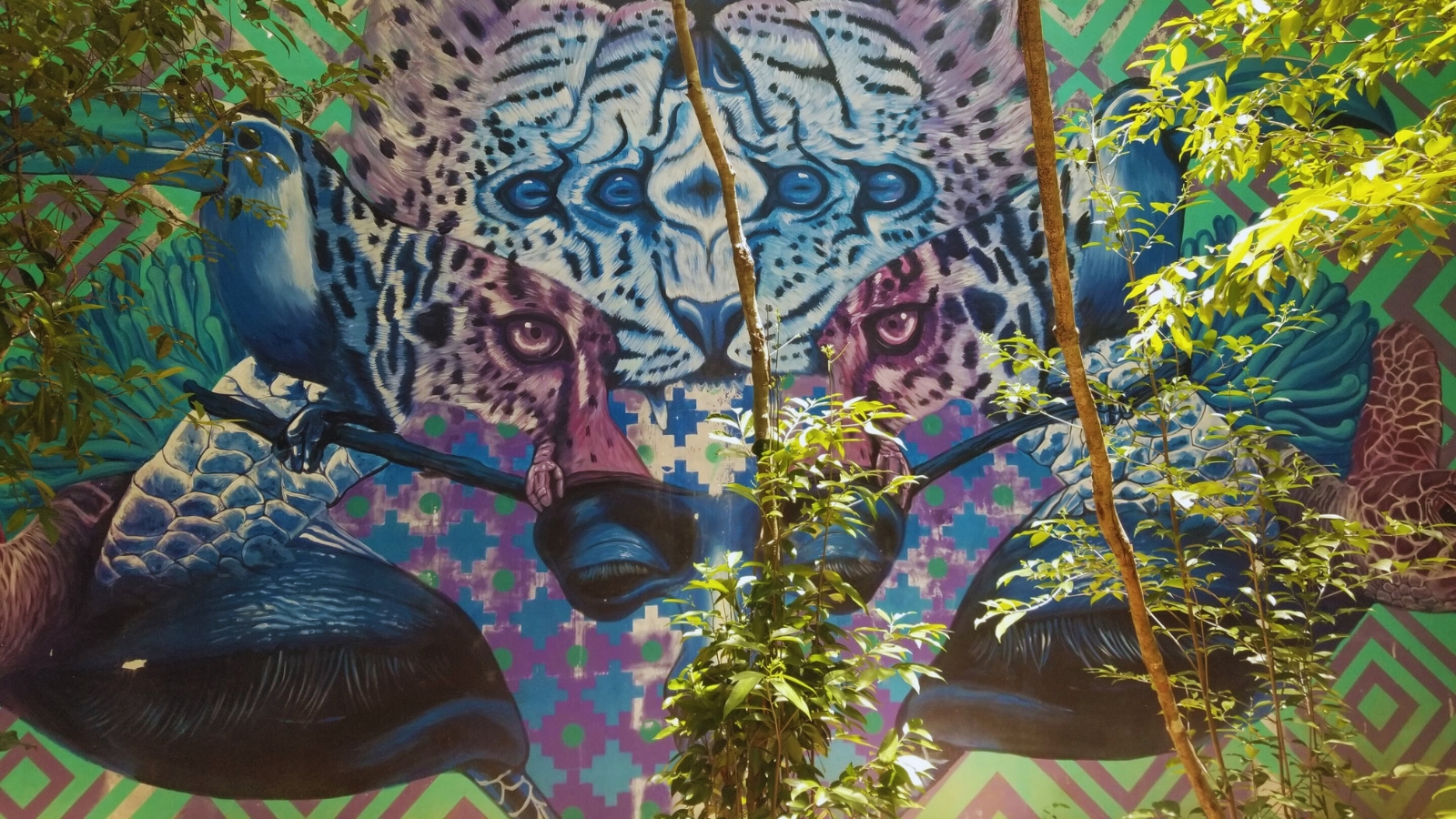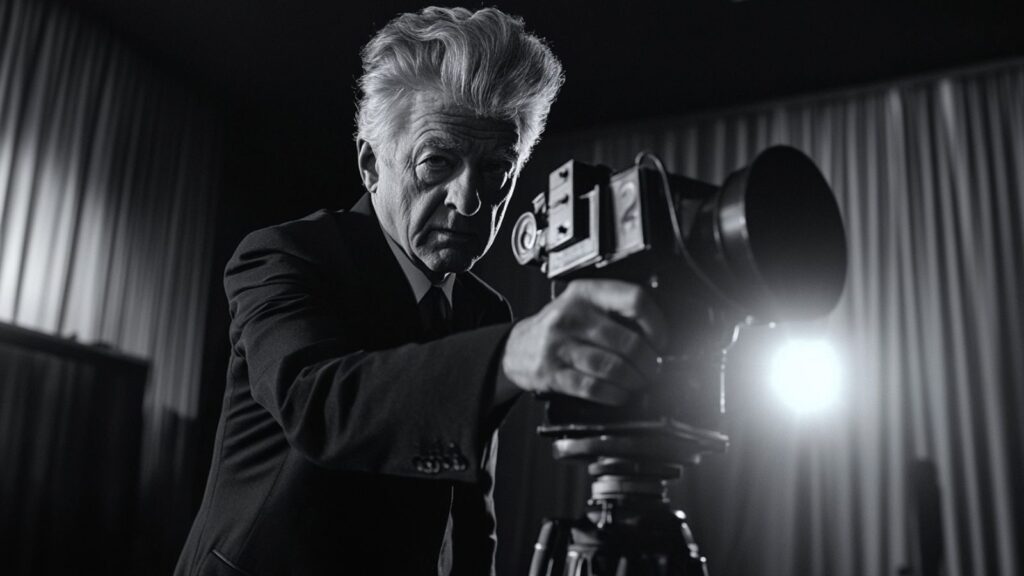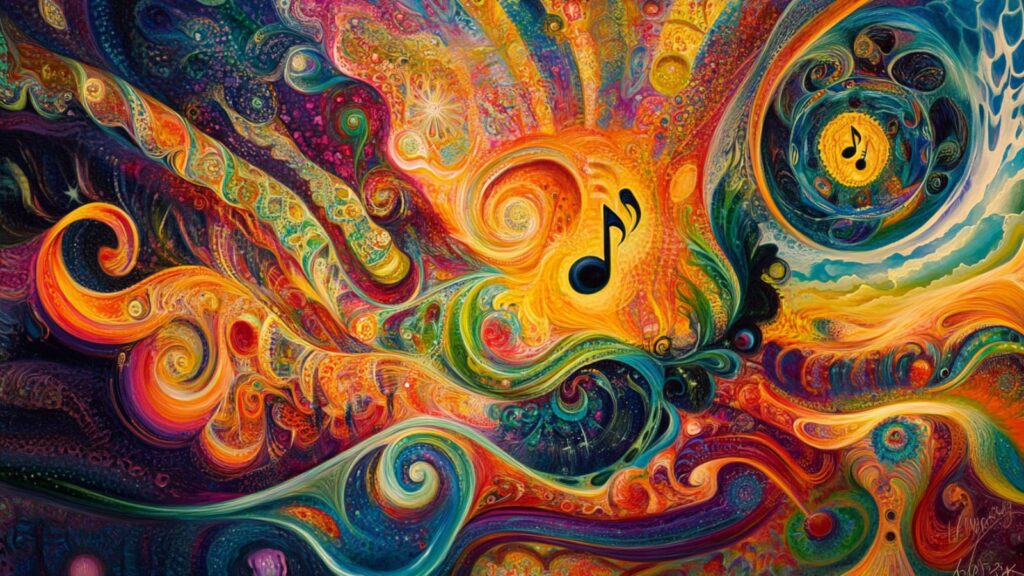Over the past 100-plus years, a rich interchange of history, culture, and people has crossed the border between the United States and Mexico. Now, the burgeoning psychedelic revival bursts the southern border. Bolstered by psychedelic tourism, Mexico catches the hallucinogenic overflow gushing into our neighboring country. While Mexico experiences déjà vu (paging Maria Sabina) with the latest arrival of Americans and Westerners, visitors seeking spiritual satiety discover a contrast of new and old in Tulum and Oaxaca.
Is Mexico the Psychedelic Surrogate of the United States?
Since the 1950s, Mexico’s psychedelic subculture has ebbed and flowed. The country finds itself atop a high and beautiful wave again. Psychedelics, plant medicine, and ceremonies are no longer found in distant, isolated pockets of indigenous culture insulated from the rest of the world by rugged terrain and imposing mountain ranges.
Thanks to Mexico’s willingness to seize tourism opportunities, its close proximity to the United States, as well as its legal gray area regarding plant medicine, Mexico has become the United States’ psychedelic playground.
Every conceivable type of retreat and plant medicine ceremony can now be found anywhere between Real de Catorce and Cancun. However, Tulum and Oaxaca de Juárez now stand as the two biggest beneficiaries of the latest wave of psychedelic tourism. Other places like Tepoztlán and Mazunte deserve mention, but they lack the notoriety and ease of access of Tulum and Oaxaca.
Tulum and Oaxaca stand in contrast to each other like yin and yang. Speaking in strict cultural terms, Tulum is to Oaxaca as Las Vegas is to New Orleans. One is an artificial creation, while the other is a cultural creation. The two cities offer unique experiences, and a quality journey can be had in either location; however, one is much more authentic than the other.

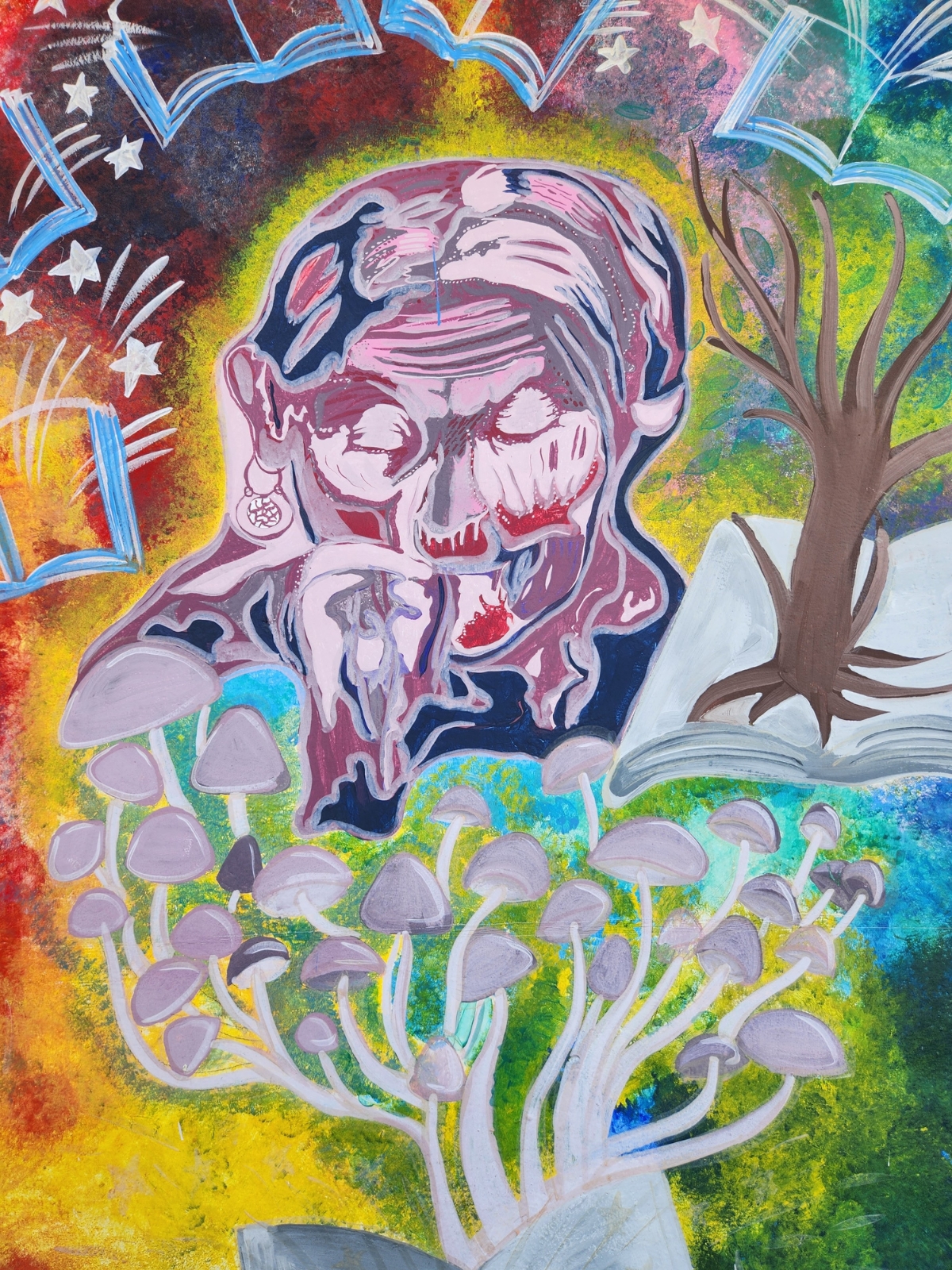
Asking for a Tulum mushroom probably isn’t an issue
Tulum: Psychedelic Hedonism at Its Best
With its huge nightclubs, festival venues, and readily available “party favors,” Tulum feels like the psychedelic version of Las Vegas. No one goes to Vegas seeking authenticity. People go to be distracted by the overwhelming circus-like atmosphere, which temporarily suspends reality, offering the chance for something magical to happen. Can you win big in Vegas? Sure, but the odds are against you. Tulum echoes this experience.
Tulum draws you in with an irresistible sexiness. Tulum has all the cachet. Will you have an incredible time and big fun in Tulum? Probably. Will you leave feeling you had an authentic experience or connection to culture? Maybe. Despite being in Maya country, I never heard Mayan spoken in Tulum.
The purest touchpoint of Mayan culture is the Tulum ruins and you can’t even see them from the beachside party zone. How much does genuine Mayan culture interest Americans and Westerners visiting Tulum? Does anyone ask for the time in Las Vegas?
Who can resist the seduction of a psychedelic mashup of Las Vegas and Disneyland for adults in an exotic locale nestled along the Mayan Riviera in a steamy jungle? It’s not easy. But it’s for this very reason, though, that Tulum may not be the most authentic destination for psychedelic endeavors, whether healing, spiritual, or otherwise. In the early 2000s, Tulum was still a sleepy Mayan fishing village. There was nothing there but gentle Caribbean waves lapping at the sand…until the party arrived.
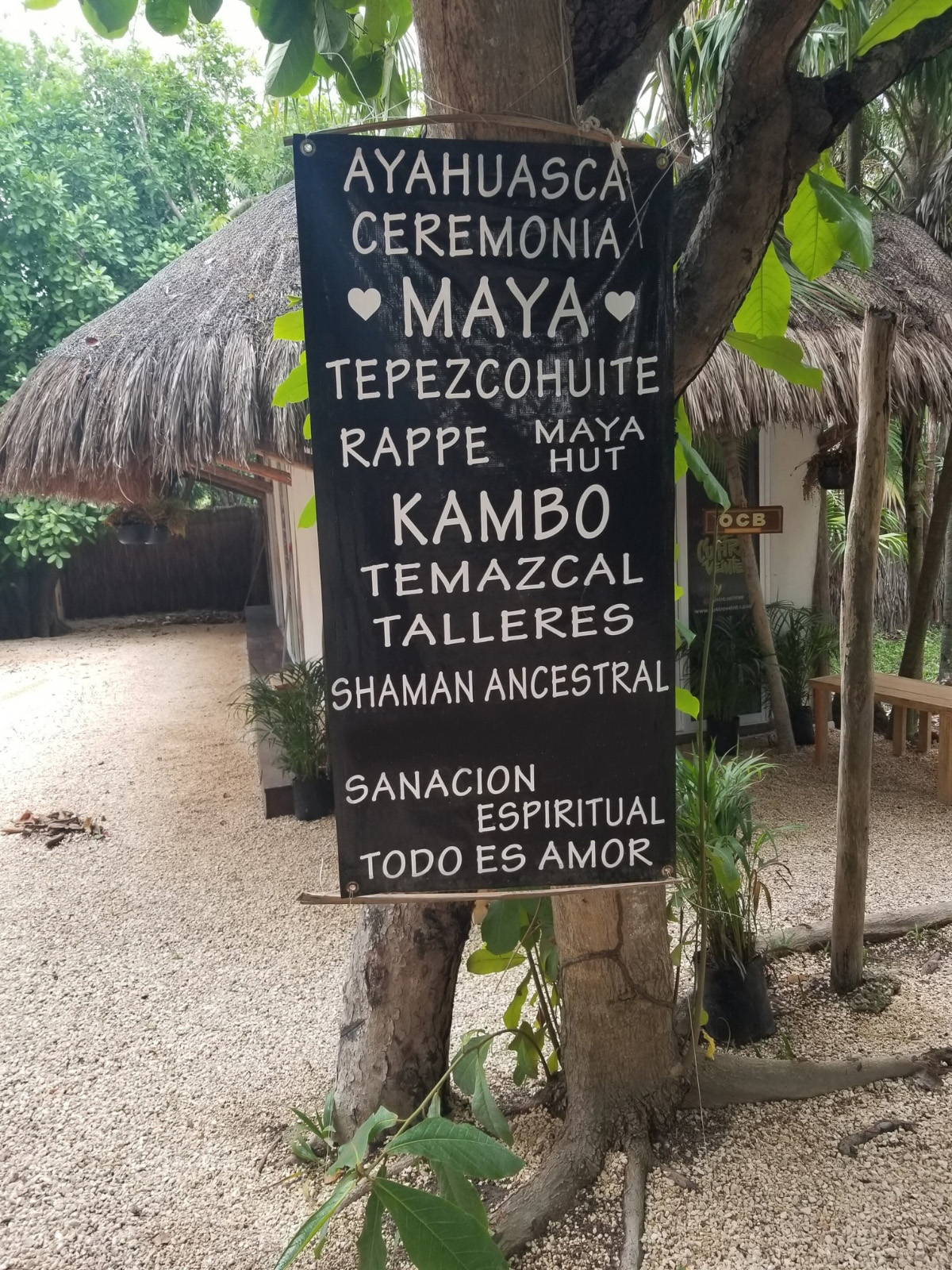
Tulum: From Fishing Village to Spiritual One-Stop Shop
Tulum Becomes Party Central
Developers and Western monied interests saw an opportunity, seized on it, and transformed Tulum into the Ibiza of the West. The days of a single place having a stranglehold on electronic dance music culture ended. In some ways, it’s nice that an alternative to Ibiza exists. How many people can afford to fly to Spain nowadays? Does everyone want to spend a week in the dust and mud of Burning Man? However, much like Las Vegas rose out of nothing amidst the desert sands, the same can be said of Tulum.
Tulum was created to cater to the hedonistic pleasures of the West, and with it came the same problems. Sure, anyone can go there and party all day and night, doing any kind of psychedelic they wish. You can also find any type of psychedelic ceremony, retreat, or journey imaginable. However, due to Tulum’s unique traits, this brings problems: infrastructure issues, cartel activity, and shysters.
Psychedelic Tourism Doesn’t Equal Cleanliness
Tulum was thrown up in the jungle haphazardly. More infrastructure foresight was put into Chichen Itza’s construction. Tulum has well-known sewage problems. The local sewage problems may not cross your consciousness there, but that doesn’t mean those cenotes you’re swimming in are the cleanest.
Burning Man and burners aspire to not leave a trace and pee in a bottle. Well, Tulum doesn’t abide. So, it might be hard for some to square the circle of a profound spiritual experience while soiling the local environment.
When the Cartel Makes a Play
Unfortunately, the cartels are soiling the Mayan Riviera, too. Years ago, cartels didn’t operate along the Mayan Riviera. Tulum wasn’t a giant rave yet. However, with the influx of Americans and Westerners flocking to the psychedelic jungle paradise seeking drugs, cartels can no longer resist the business opportunities.
There used to be an unwritten, unspoken agreement that cartels wouldn’t operate along the Mayan Riviera, as it’s the golden goose of the Mexican tourism industry. Now, little by little, cartel crimes have risen in Tulum. I experienced a shooting in downtown Tulum once, about one block from where I was at. If not cartel crime, you might fall prey to other kinds of illicit activity.
Not All Press is Good Press
How about the hotel room cleaner finding your ketamine stash? Or this sobering account of the “illicitly trafficked underbelly of international rave culture?” Amidst this climate, there’s bound to be snake oil salesmen, scammers, and charlatans. Let’s be honest. The current psychedelic revival mimics the gold rush in California. Two million tourists visit Tulum annually. With opportunities this big and prodigious amounts of money sloshing around, how can people aiming to make a quick buck not jump on the bandwagon?

The Allure of Luxury
Luxury psychedelic retreats and ceremonies have invaded Tulum like the smelly seaweed on its beaches. Are they all bad? Of course not. But with the flashiness and allure of Tulum, it’s easy to be taken advantage of.
Is paying $3,000 to $5,000 for a Western-owned weekend psilocybin retreat more beneficial? Or is a psilocybin ceremony somewhere else in Mexico with an indigenous curandero for less than $100 more beneficial? Only you can discern that. Proceed with caution. Tulum is the perfect place for fly-by-night psychedelic experiences, although they exist anywhere in Mexico. (I ran afoul of a bad experience once near Guadalajara.)
Finding Tulum’s Exceptional Side
This is not to say that Tulum is without its good side. If you’re going there just to party, you’ll likely have a great time, as long as there isn’t a cartel dust-up. When I was there, I did a bufo ceremony at a well-known place, and had the most profound experience of my life. I found the perfect way to thread the needle through all of Tulum’s craziness and came away with an incredible, cosmic level-up.
Thanks to my unsolicited toad encounter, I have a small corner of my heart reserved for my love of Tulum. Bufo and ayahuasca seem more prevalent here than in Oaxaca, so, without a doubt, Tulum can be awesome, too. It depends on what you’re seeking and the type of person you are. If the madness, traffic, and cost of Tulum aren’t for you, perhaps Oaxaca is.
Oaxaca de Juárez – Spiritual Center of Mexico?
Oaxaca is everything Tulum is not. Especially regarding the psychedelic scene. Resting just south of the Sierra Madre mountains, Oaxaca exudes authenticity by way of understated charm, birthed from a legendary clash of civilizations. In the broadest sense, two cultures comprise Mexico. Spanish colonial influences provide the heartbeat, while Mesoamerican influences form the soul of Mexico. Oaxaca overflows with soul.
Although Spain colonized Mexico, and its influences still run deep in Mexican culture today, the conquistadors were no match for the state of Oaxaca. For millennia, Oaxaca has cultivated dozens, if not hundreds, of indigenous cultures. Out of almost 4 million people, 32%, or 1.2 million residents in Oaxaca, still speak an indigenous language. This is the most of any state in Mexico.
Three mountain ranges crisscross Oaxaca, covering a massive 82% of the state’s surface area. The deep and distant pockets scattered throughout the mountain ranges have well-guarded Mesoamerican cultures and traditions.
The Spaniards realized the task of subjugating all of Oaxaca wasn’t worth the effort. Although Catholicism still became the default religion, many Mesoamerican traditions were allowed to continue. The Spanish never extinguished shamanism and plant medicine traditions in Oaxaca. Without a doubt, a nearly endless amount of retreats, ceremonies, shamans, and plant medicine can be found throughout the state of Oaxaca. However, no city benefits more than Oaxaca de Juárez.
Spotlight on Oaxaca
With its international airport, lower cost compared to Tulum, and easygoing vibe, Oaxaca attracts a much different crowd. Whereas Tulum is young, electronic dance music, and party, Oaxaca is older, yoga, and healing. These elements, combined with its world-famous reputation for psilocybin, have put Oaxaca in the limelight. Heck, subtract the psychedelics, and Oaxaca is still having a moment. Readers of Travel & Leisure have voted Oaxaca the best city in the world two years in a row.
Oaxaca is on the radar now. The hippie backpackers still come, even though they are overshadowed by a mix of tourists, remote workers, and retirees. I once met an American here reading The Body Keeps the Score by Bessel Van der Kolk. For better or for worse, Oaxaca is attracting more money now.
Similar to Tulum, the money nurtures a dizzying number of high-end retreats, indigenous ceremonies, plant medicine practitioners, and even underground psychedelic therapists doing business in and around Oaxaca. Despite the trendiness, Oaxaca’s cobblestone streets, elegant Spanish, colonial churches, less crime, and sleepy siesta vibes belie the thriving psychedelic ecosystem right beneath your nose.
There’s psilocybin home delivery, for example. Online messaging groups advertise microdoses (in Spanish), powdered psilocybin by the gram, or chocolates sent to your door. Prefer mushroom-infused mezcal? Yeah that’s right. Oaxaca doesn’t mess around.
If the psilocybin-infused mezcal is like the cannabis-infused mezcal circulating around Oaxaca, you’re in for a ride. The legality of the mushroom mezcal is another matter. Peyote and hallucinogenic mushrooms are both legal in Mexico strictly in spiritual ceremonies. Does toting this bottle around qualify as an indigenous ceremony? Regardless, the legal vibe around here feels lax and relaxed. How can you blame anyone for wanting to visit Oaxaca?
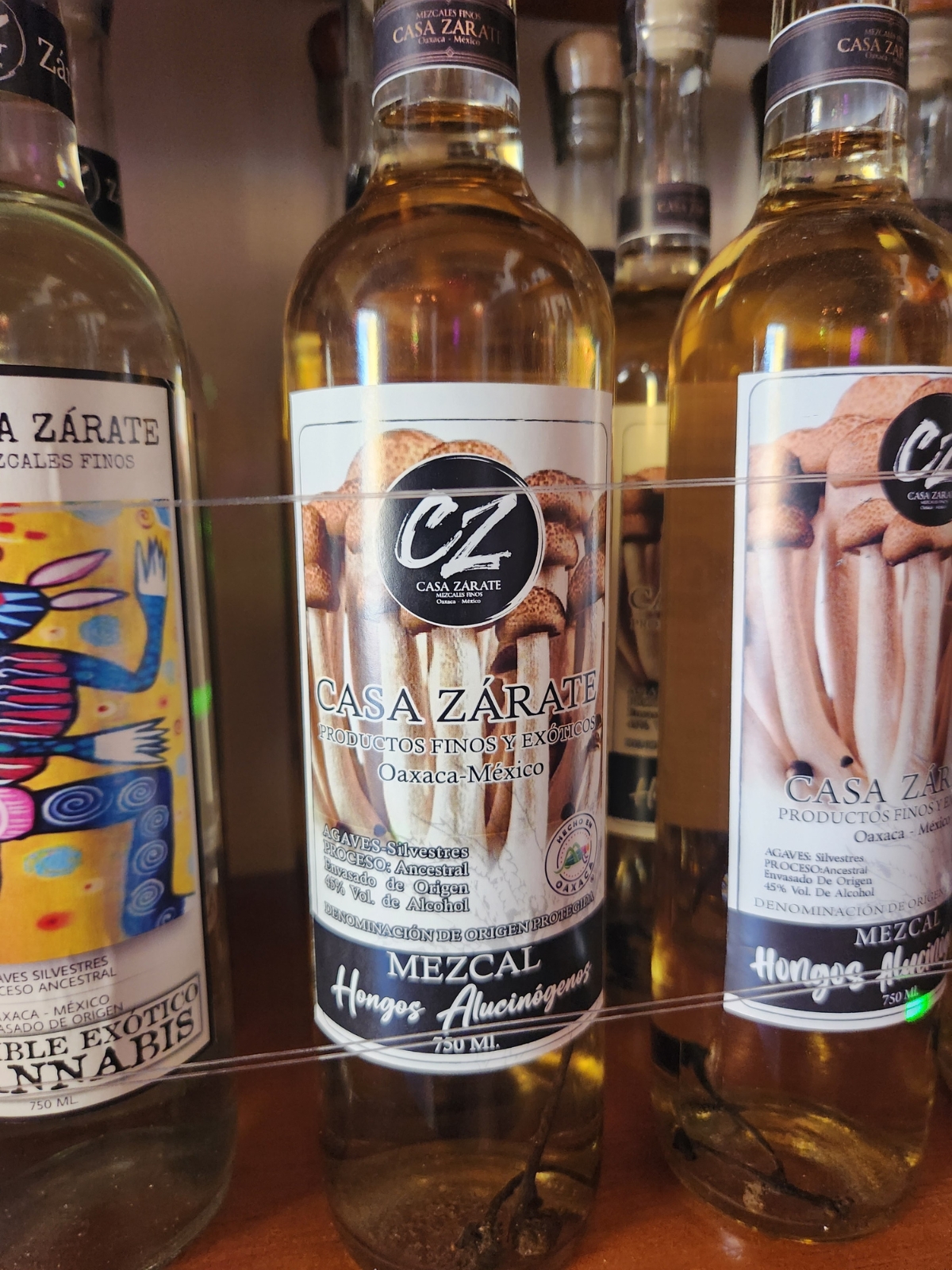
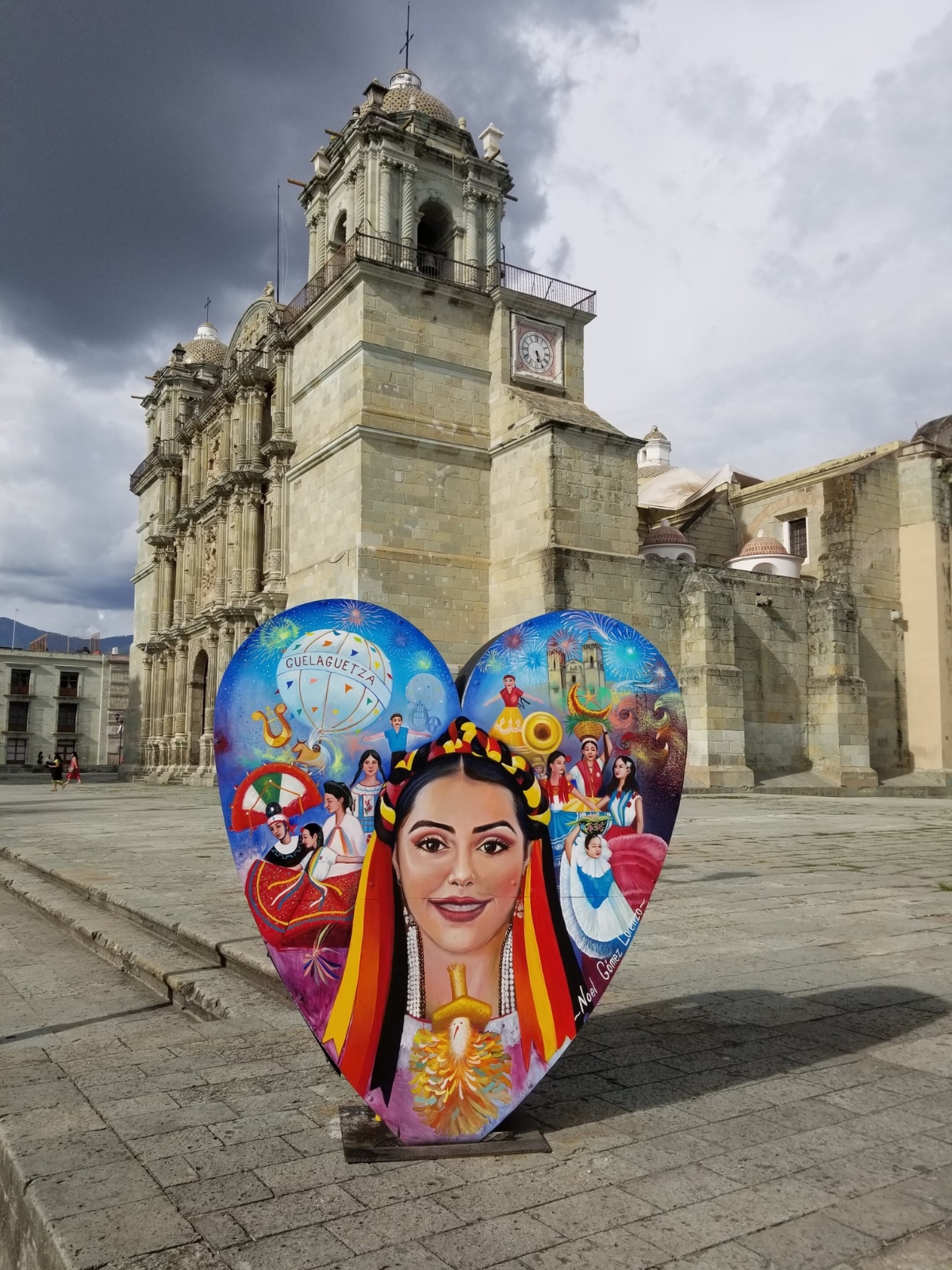
Oaxaca’s Seductive Indigenous Vibes
Oaxaca seduces Americans. With its semi-close proximity to the States, spiritually hungry Americans looking to escape the soul-sucking consumerism and materialism find Oaxaca to be a fine psychic salve. There are no McDonald’s in the center. The chaos, noise, and cost of Tulum don’t interfere here. The invite-you-into-their-house friendliness and warmth of Oaxacans endear you to the locals.
And if you’re not doing plant medicine with an indigenous shaman or curandero, at least you feel like it in Oaxaca. The ancient ruins of Monte Alban and Mitla are nearby. Indigenous people abound, the sun is warm, the mountains rise up behind the palm trees, and no one is ever in a hurry. Time slows to a fat water drop squeezing out of a faucet.
Oaxaca’s nifty vibe and irresistible energy draw more and more visitors. Is Oaxaca becoming a victim of its own success? That’s tough to say. For now, at least, a local friend of mine in Oaxaca doesn’t mind psychedelic tourism. His grandmother was Zapotec, and he tells me he’s happy that Americans come down and take the opportunity to look inside and realize we’re all connected, we’re all one.
Mexico’s Full Psychedelic Spectrum
The existence of polar opposites like Tulum and Oaxaca displays the breadth and depth of psychedelic tourism experiences available in Mexico. Tulum and Oaxaca speak to distinct people in search of different things. Good can be had in both locations, but it’s hard to deny the pull of Oaxacan shamanism and mysticism.
